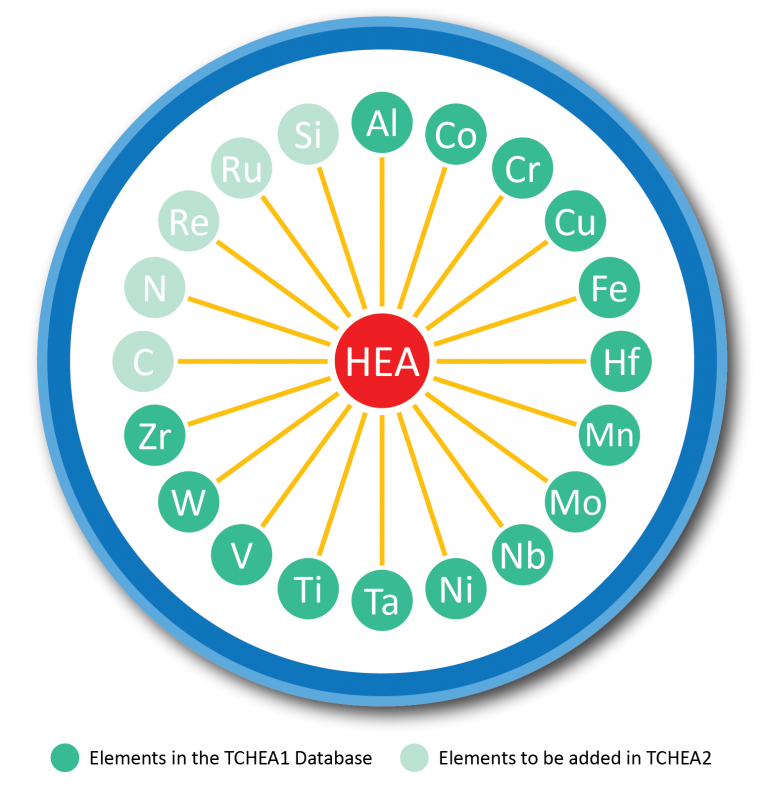About High Entropy Alloys
These complex alloys were introduced in 2004 in two papers that were published a mere two months apart. The definition of HEAs, MPEs and CCAs varies, but in the broadest sense, HEAs are considered to be alloys consisting of five or more principal elements with 5 to 35 atomic percentage for each and based on a simple solid solution, while MPEs and CCAs are considered to be alloys with two or more principle elements.
About the Presentation
In late 2015, Thermo-Calc Software released our first database designed specifically for these complex alloys, the TCHEA database. Dr. Hai-Lin Chen of Thermo-Calc Software recently gave a presentation on its development and its place in this emerging field. The presentation, Calphad Database development for HEMs: Challenges, progresses and prospects, was presented at the International Conference on High-Entropy Materials this November in Hsinchu, Taiwan.
In the presentation, Dr. Chen discussed the challenges faced by developers of HEAs databases, the TCHEA database in particular, and how to tackle those challenges. He then demonstrated that CALPHAD calculations can help to predict/interpret the phase formation and microstructure formation in MPEs by offering several examples and discussing how to properly perform the calculations and interpret the results. The presentation is helpful to understand where we are with HEA database development and where this exciting field is heading.
Learn more about this exciting, young field by downloading the complete presentation: Calphad Database development for HEMs: Challenges, progresses and prospects.
As of 2023 there is a 6th version of our High Entropy Alloys database, TCHEA6. We’ve also made MOBHEA3 available, which is a corresponding mobility database that provides kinetic data for those working with the add-on kinetic modules – the Diffusion Module (DICTRA) and the Precipitation Module (TC-PRISMA) – as well as a few specific calculation types, such as Scheil with back diffusion.
